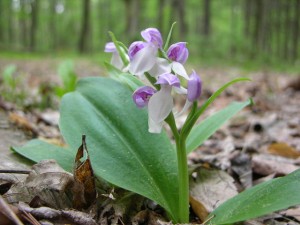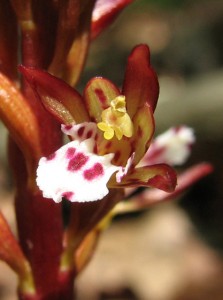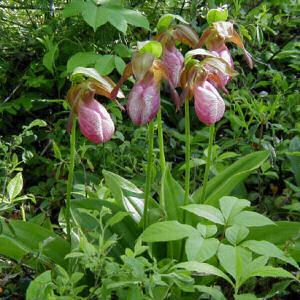Nationally-renowned orchid enthusiast Stanley L. Bentley once shared some words of wisdom about this part of the world:
“This is a land of mature trees and open grasslands, a land of large mammals and small birds, a land of sunshine and rain, a land of spring wildflowers and autumn colors; it is a land of life in myriad forms. There is no other place quite like the southern Appalachian Mountains.” (Native Orchids of the Southern Appalachian Mountains, 3)
The words are true enough, illustrated by our regional National Forests, our wonderful air, land, and water. And they speak to the diversity of life found within these ecosystems. Today I will focus on a small part of that diversity, Western North Carolina’s incredible array of native spring orchids.
The Southern Appalachian Mountains have thawed, giving rise to an amazing collection of spring flowering plants. Plenty of trout lily, trillium, rues and rhododendron, wildflowers which are commonplace in our minds, will be seen in abundance. Amidst these simple flowers lies an array of spring orchids which are often overlooked.
One of the first to emerge is the showy orchis (Orchis spectabilis). This small orchid breaks the ground with an ovate, soft green leaf. Soon, fertile individuals will send up a short flowering stalk, maturing to reveal ‘showy’ purple and white hooded flowers with a faint but pleasant scent. In the right habitat, the showy orchis occurs abundantly; moist, rich woodland coves host the most viable populations. Be on the lookout for these at this very moment, and expect them to last through the month of April (and into May, in cooler microhabitats).
One interesting genus of leafless orchids, Corallorhiza, emerges in late spring as well. But you’ve got to be sharp to find these unique plants. Their flowering stalks emerge to reach an average of one foot. Most species bear small, inconspicuous blooms on a relatively camouflaged stalk. However, one special species, spotted coralroot, produces beautiful flowers, reminiscent of tropical orchid species you’d find in a flower shop. Keep you eyes peeled as you’re hiking through moist, wooded forest with some canopy breaks in mid-to-late spring…you might spot one of these delicate coralroots!
Last but not least come the lady’s slippers, (Cyprepedium spp.), some of the more well-known orchids in the southern Appalachians. Older, sloping pine/hemlock plantations are great habitats for the pink lady’s slipper (C. acaule). These unique orchids have attractive wide basal leaves which give rise to a flowering stalk with a single terminal bloom (sometimes, rarely, there will be two blooms per stalk). The lady’s slipper is so named because of the shape of the prominent labellum, or lip, which somewhat resembles a ballet slipper. Yellow lady’s slippers (C. parviflorum var parviflorum) are less common, and exist in small populations across widely varying habitats. Both species are watch-listed in North Carolina; the pink is often ‘poached’ from its natural setting, while the yellow’s populations have been showing decline in recent years.
This spring, get outside and enjoy these wonderful flowers. Go orchid hunting, and bring a camera with you to capture their intricate beauty. Make mental notes of ‘caches’ to which you can return next year. Show your friends, but always remember that these flowers are an integral part of our natural ecosystems and so they should never be picked or uprooted for transplant, regardless of how attractive they’d be in a garden. Enjoy the spring forest and all of it’s emergent green glory!
-Owen Carson, Field Technician and Orchid Enthusiast



